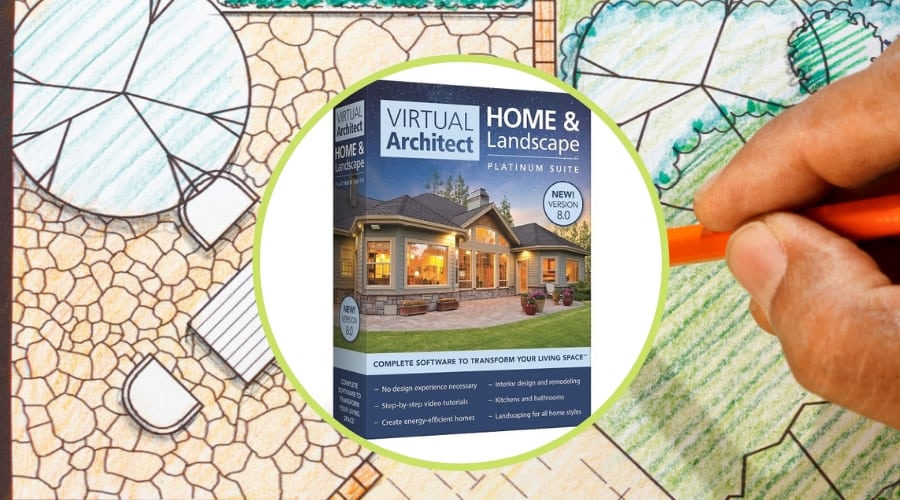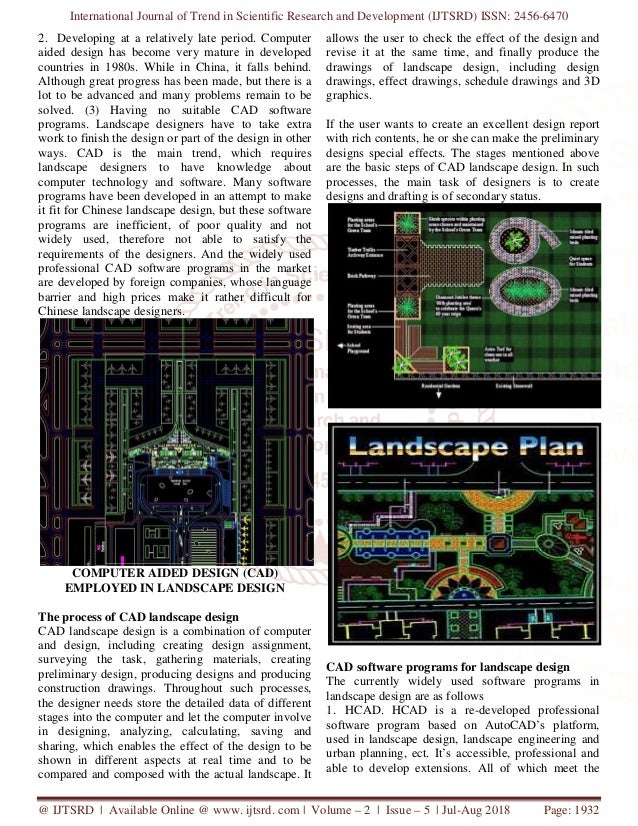
Landscape Cad ProgramsAs an AutoCAD user you need an up-to-date GIS backdrop for new CAD designdrawings. You do not need to be an artist to create great-looking restaurant floor plans in minutes. ConceptDraw DIAGRAM great restaurant floor planner. It helps make a layout for a restaurant restaurant floor plans, cafe floor plans, bar area, floor plan of a fast food restaurant, restaurant furniture layout, etc.
Landscape Cad Programs Free Or Open
Open Source Software (OSS) Archimedes - CAD Blender - 3D modeling BRL-CAD - CAD Compiz. Google SketchUp - 3D Modeling i-Tree - Urban forest modeler Kerkythea - Renderer, SketchUp plugin available Lands Design - Rhino landscape plug-in Terragen - Landscape modelling. George, BIM, Bio-West, cinematography, Civil 3D, Civitas, computer, Datum Digital Studio, design, Design Works, digital, diversification, Drew Hill, drones, Emily O’Mahoney, Eric Berg, GIS, Glen Busch, Ground Reconsidered, Huitt-Zollars, interoperability, Jessica Fernandez, Karen Skafte, Land F/X, landscape architect, Landscape Architecture, Landscape Architecture Foundation, landscape design, Lumion, Mark Johnson, Mississippi State University, OJB Landscape Architecture, Pacific Coast Land Design, Paul Drummond, Peter Summerlin, Photoshop, project deliverables, Revit, Rhino, Seth Bockholt, site inventory and analysis, SketchUp, Snøhetta, software, survey, technology, Todd McCurdy, University of Virginia, Utah State University, Vectorworks, video game, virtual walk-through, VR, workflow on November 5, 2019|Explore Free or Open Source Landscape Architecture-related Software: Freeware.
That tool, eventually known as AutoCAD, ushered computer-aided design into the field with the goal of increased accuracy and efficiency. Online Training.In 1982 a new tool landed on the desks of engineers that would revolutionize the construction and design industries. A comprehensive, landscape-specific 3D component warehouse (SketchUp add-on). FROM THE NOVEMBER 2019 ISSUE OF LANDSCAPE ARCHITECTURE MAGAZINE.Landscape-specific CAD software with the industry’s best presentations.

Vectorworks, a more landscape-focused BIM software, does not exchange files directly with Revit, an obstacle that impedes digital collaboration with architects. The popular architecture-centric Autodesk Revit software lacks functional landscape modeling tools, though it has a library of building objects such as floors, windows, doors, and roofs. The advantages of BIM adoption are rarely as obvious as the drawbacks. FROM THE JUNE 2019 ISSUE OF LANDSCAPE ARCHITECTURE MAGAZINE.It’s a familiar scene in landscape architecture offices of all sizes: Around a conference table, a debate arises about the benefits and drawbacks of adopting a Building Information Modeling (BIM) work flow. (more…)The collaborative power of information-driven modeling software. While the big three are still staples, there are now many alternatives and add-ons to augment and expand the design workflow.


Its reputation in the field is as a clunky, building-centric, overly complex tool that has put up yet another barrier between landscape designers and architects.Yet Quinn, who merged her San Francisco practice with the Office of Cheryl Barton in January, is all moonbeams. By 2012, 70 percent of architecture firms in North America reported using BIM, and in 2016 the American Institute of Architects reported that BIM was used for nearly 100 percent of projects at large firms.It seems that so few landscape architects use BIM, however, that no one has ever bothered to collect the data. BIM, shorthand for building information modeling, is the 3-D, data-rich software platform embodied by Revit, a product launched in 2000 by Charles River Software and acquired by Autodesk two years later. BIM—an acronym that puts moonbeams in the eyes of architects, but makes some landscape architects cringe—is her software of choice.
Perhaps the most pernicious aspect of this issue is the ongoing divide between digital and analog processes—using the computer versus hand drawing. In the nearly two decades that I’ve been a student, professional, or involved in some capacity with teaching at the university level, I can think of no other domain as consistently polarizing than the critically important area of how landscape architects generate and communicate their ideas. “Moving to BIM is like (more…)From the October 2016 Issue of Landscape Architecture MagazineWarning: possible confirmation bias ahead.One of the most perplexing aspects of landscape architecture education and practice that I’ve encountered is what I’ll grossly refer to here as representation.
From the February 2016 issue of Landscape Architecture Magazine.Building information modeling, or BIM, has become the default digital format for designing buildings, bridges, and other infrastructure the world over, though in theory it is just as applicable to landscape design. And it aspires for landscape architecture to leverage digital technology (more…)Landscape architects feel the push of architecture-centric software. It educates readers about the ways designers are using sophisticated digital processes right now in very real professional and academic projects and research. It critiques landscape architecture’s failure to more fully embrace the potentials of digital media. But, surprisingly, there seems to be a continued skepticism or distancing from advanced computational processes even by those of the postdigital generations, which is much more troubling given that these will be the future leaders of the discipline, and, as the authors of this book so effectively demonstrate, not embracing the digital in a robust way at this point significantly reduces the potential of the discipline to have the type of impact it aspires to have.Landscape Architecture and Digital Technologies: Re-Conceptualising Design and Making, by Jillian Walliss and Heike Rahmann, both academics based in Australia, is a well-reasoned, well-written, and at times polemical book.
It’s not that landscape architects don’t appreciate the information-rich approach of BIM—quite the contrary—but many loathe its building-centric nature.


 0 kommentar(er)
0 kommentar(er)
